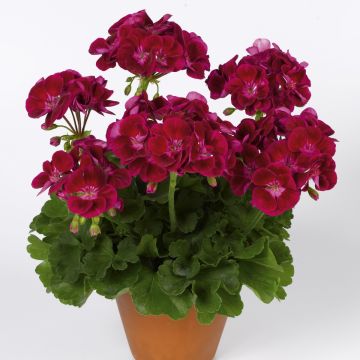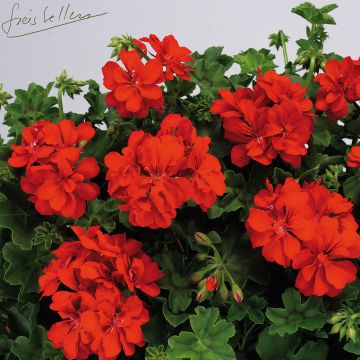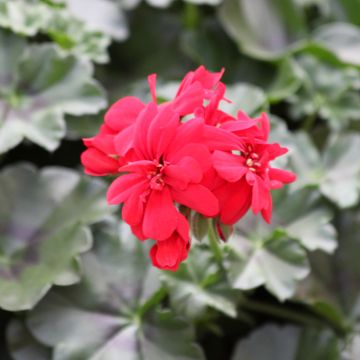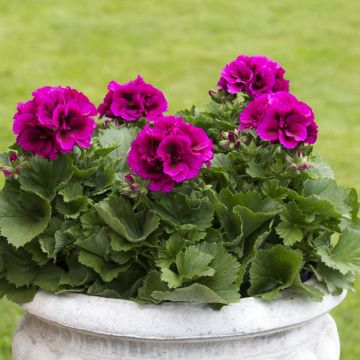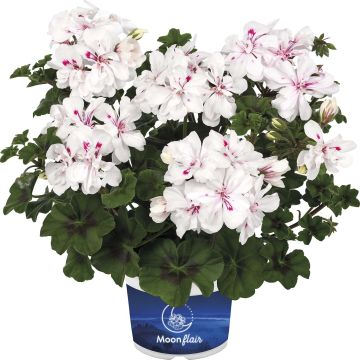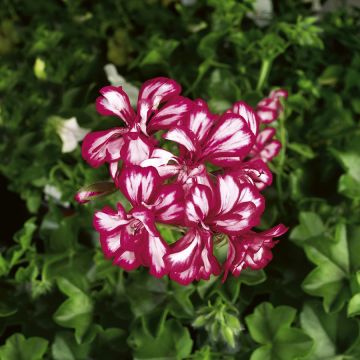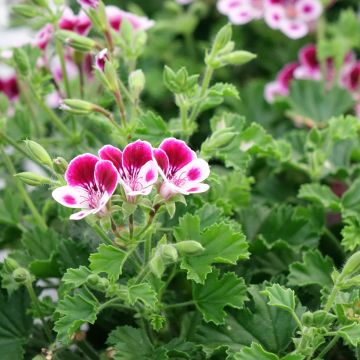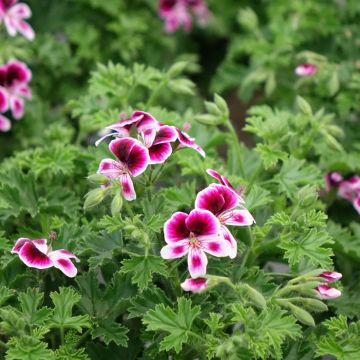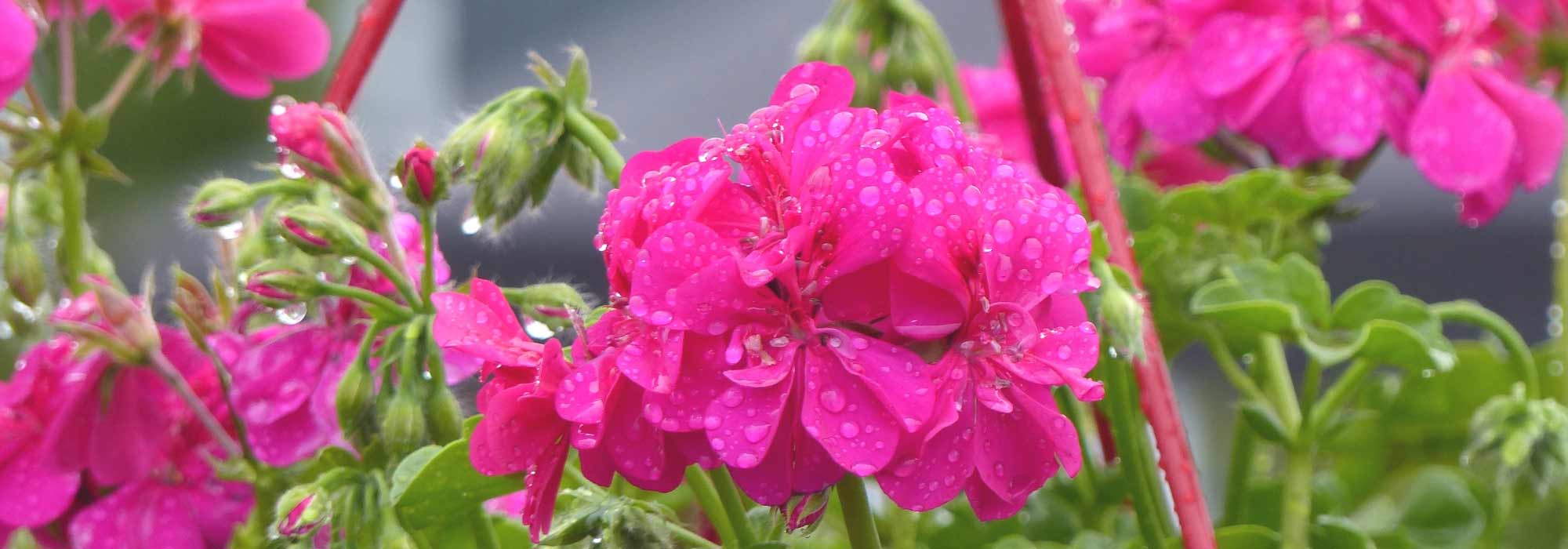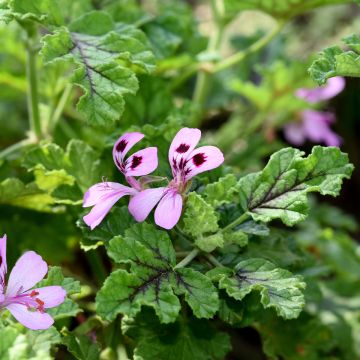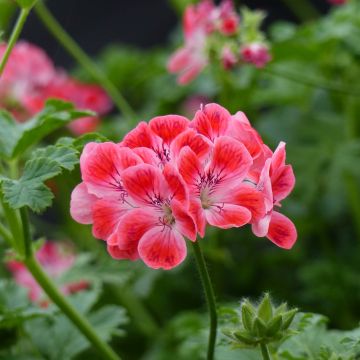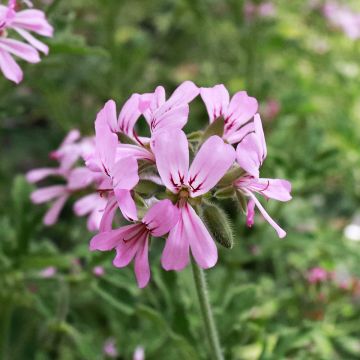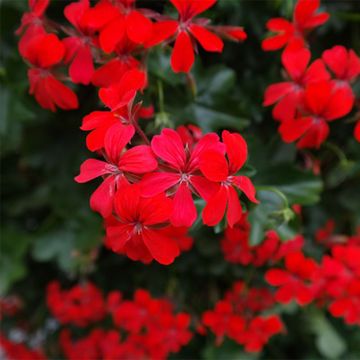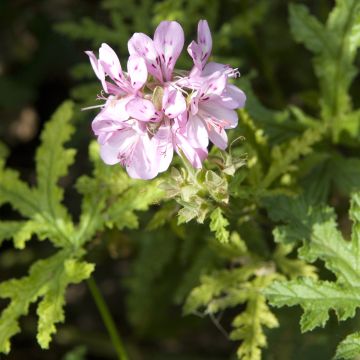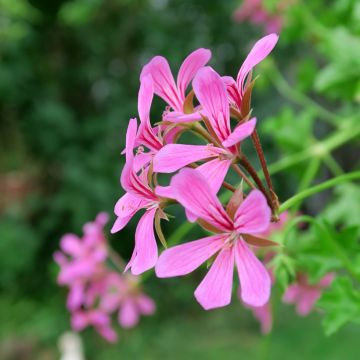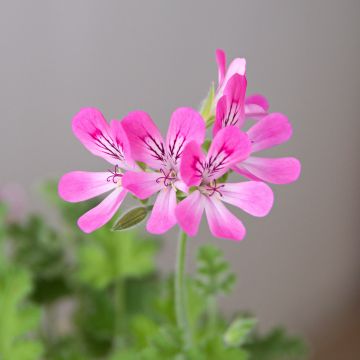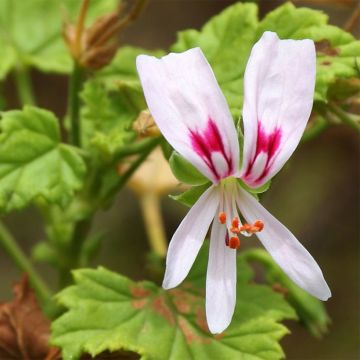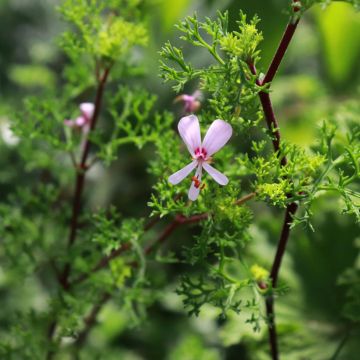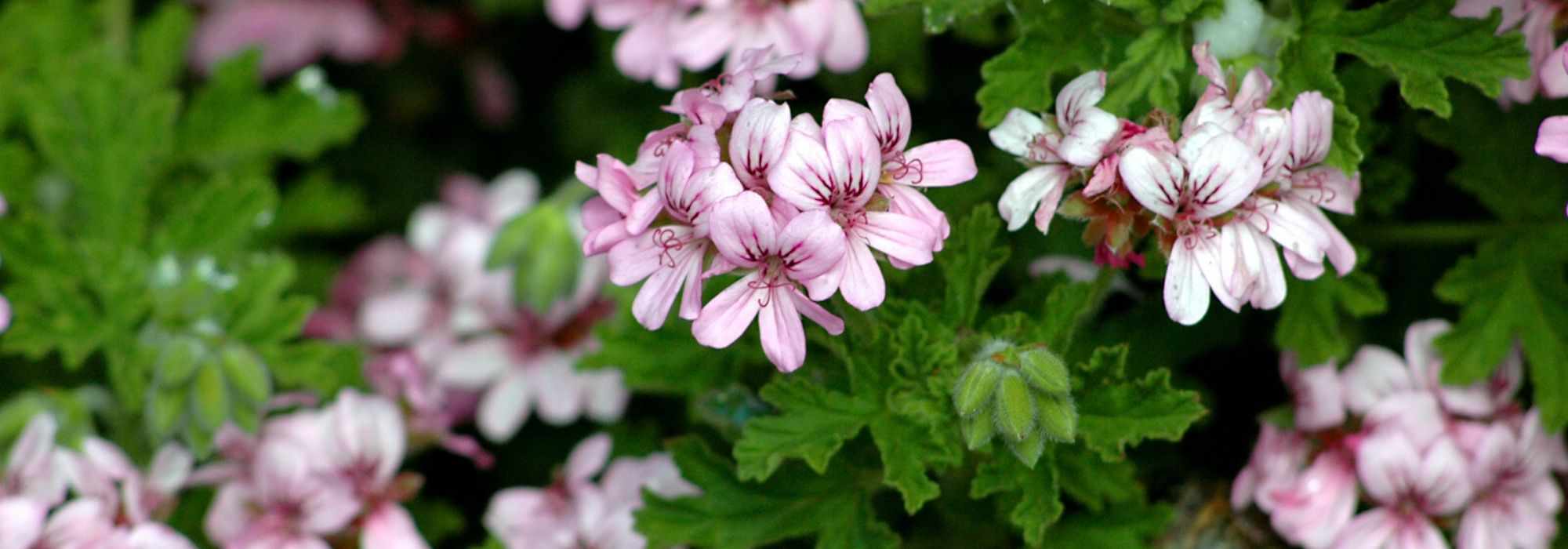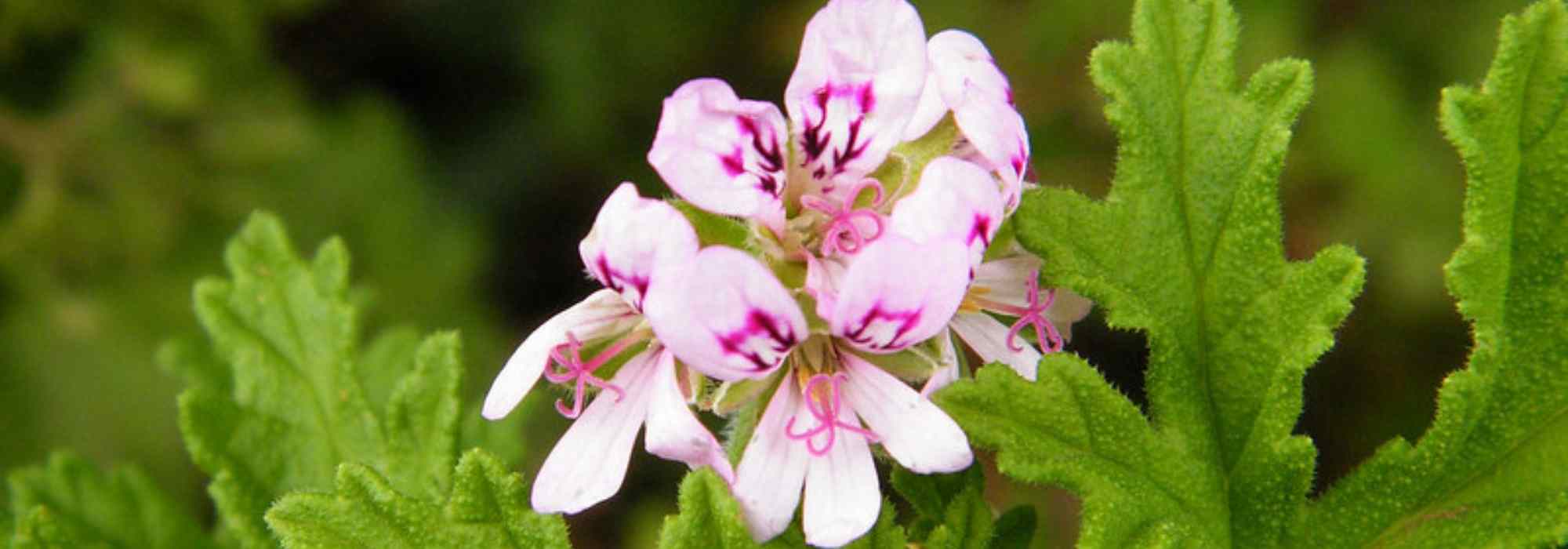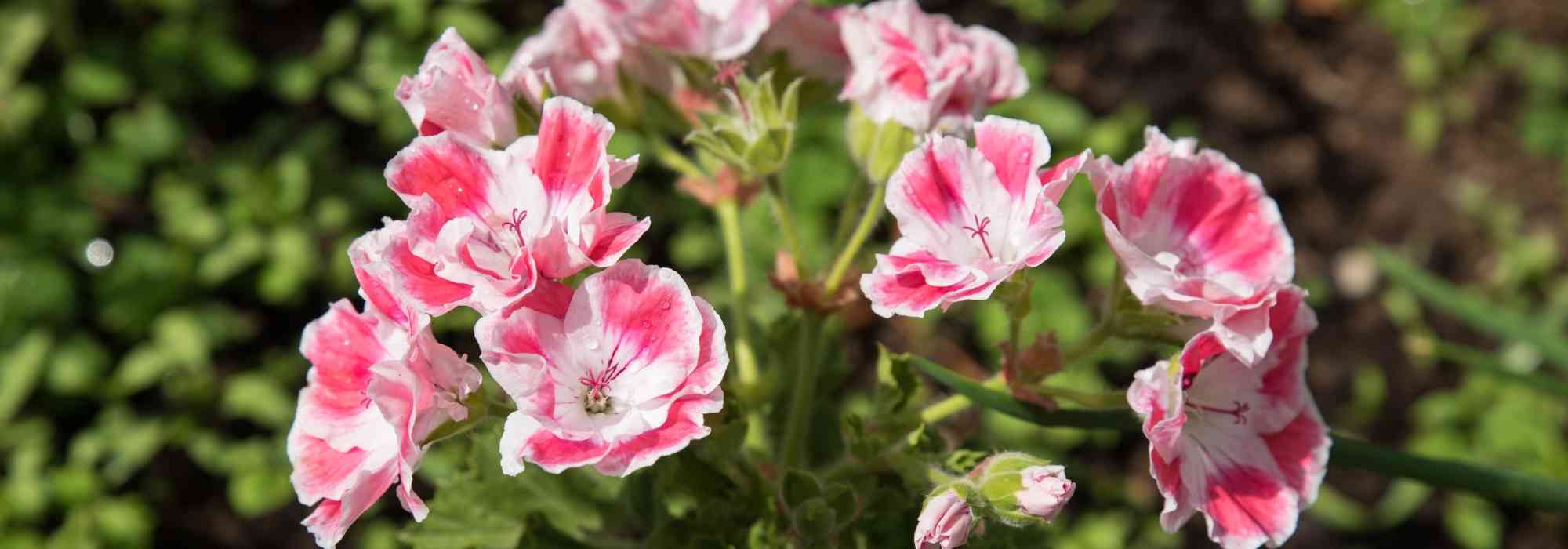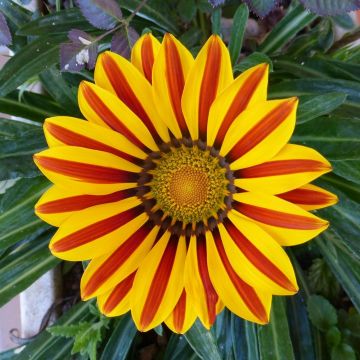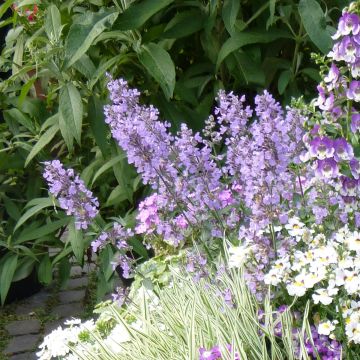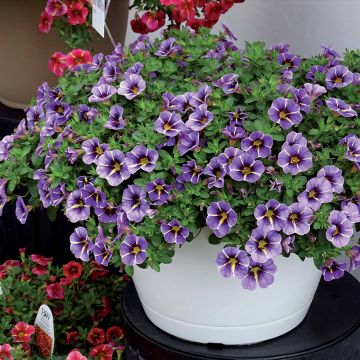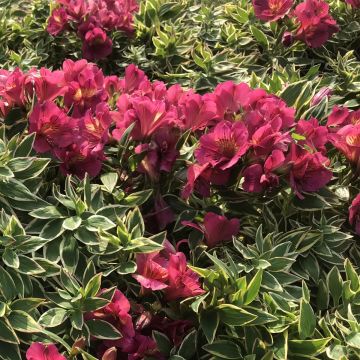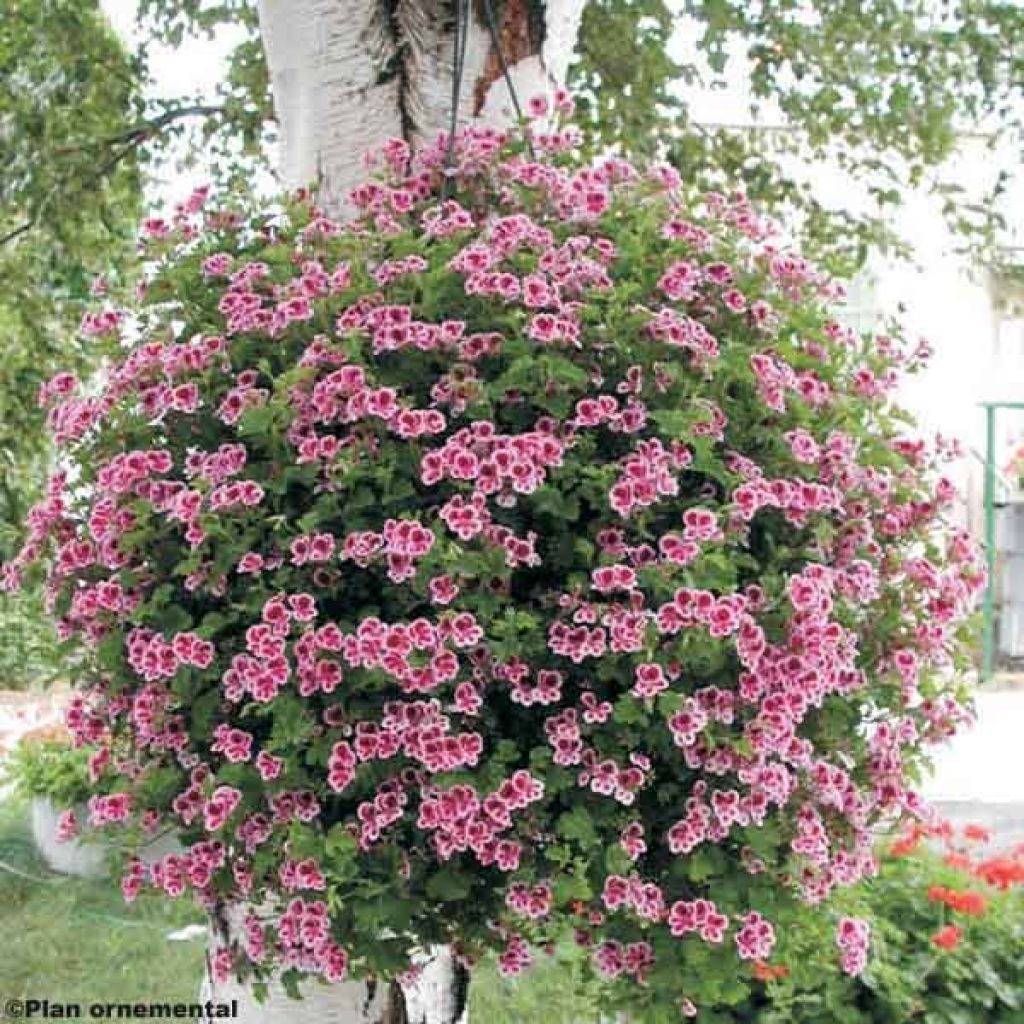

Pelargonium - Géranium Angeleyes Randy
Pelargonium Angel Eyes Randy - Regal Geranium
Pelargonium x domesticum Angel Eyes® Randy
Regal Geranium, Martha Washington Geranium, Lady Washington Geranium
Received in impeccable condition.
Simone D., 02/04/2018
Special offer!
Receive a €20 voucher for any order over €90 (excluding delivery costs, credit notes, and plastic-free options)!
1- Add your favorite plants to your cart.
2- Once you have reached €90, confirm your order (you can even choose the delivery date!).
3- As soon as your order is shipped, you will receive an email containing your voucher code, valid for 3 months (90 days).
Your voucher is unique and can only be used once, for any order with a minimum value of €20, excluding delivery costs.
Can be combined with other current offers, non-divisible and non-refundable.
Why not try an alternative variety in stock?
View all →This plant carries a 6 months recovery warranty
More information
We guarantee the quality of our plants for a full growing cycle, and will replace at our expense any plant that fails to recover under normal climatic and planting conditions.
Would this plant suit my garden?
Set up your Plantfit profile →
Description
The Geranium, or Pelargonium 'Angel Eyes Randy', is part of the new generation that offers abundant flowering with original colours. Its semi-trailing habit, perfectly suited for hanging baskets, allows for generous filling of summer pots. The multiple small flowers will bloom from June to September and brighten up compositions with a dark pink hue, turning towards burgundy at their centre and bordered with blush white. The dense foliage completes this bushy and colourful ensemble.
Belonging to the Geraniaceae family, the Pelargonium 'Angel Eyes Randy' is the result of extensive hybridisation work that has led to this cultivar with multiple qualities. Its bushy and semi-trailing habit makes it the perfect ally for hanging baskets and compositions that it generously fills. It forms a beautiful, compact ball measuring 30 cm (12in) in height and spread, composed of numerous stems carrying multiple small leaves. They are a beautiful deep green, rounded, lobed, with finely toothed edges and nicely veined. From late spring, small flowers of about 2 cm (1in) appear and add color to this ensemble. They consist of two upper petals, dark pink at the centre with beautiful deep red nuances, bordered with light pink, and three lower petals in slightly paler shades of pink. Dynamic, vibrant, and light, they cover the plant like a swarm of butterflies until autumn. If you wish to keep it for the following year, you can protect it from frost by bringing it indoors to a conservatory (it cannot tolerate temperatures below 0°C (32°F)).
'Angel Eyes Randy' is a Geranium that can fill a planter on its own thanks to the density of its foliage, flowers, and the range of shades it offers. However, it works wonders alongside Petunias and Surfinias, with which it shares the pleasure of being in partial shade and having very romantic tones. If you want to accentuate the "butterfly" effect, place it alongside Lobelias or Nemesias for a hazy effect.
Note: Please note that our plug plants are professional products reserved for experienced gardeners. Upon receipt, transplant and store them in a sheltered area (conservatory, greenhouse, cold frame) at a temperature above 14°C (57.2°F) for a few weeks before placing them outdoors once the risk of frost is definitively gone.
Flowering
Foliage
Plant habit
Botanical data
Pelargonium
x domesticum
Angel Eyes® Randy
Geraniaceae
Regal Geranium, Martha Washington Geranium, Lady Washington Geranium
Cultivar or hybrid
Other Pelargonium - Geranium
View all →Planting and care
Plant your 'Angel Eyes Randy' geraniums in place, in a sunny location from April or May, depending on the climate of your region. If you choose to plant them in the ground, wait until the frost has passed, as they will not tolerate temperatures below 0°C.
You can also plant them in pots placed in a protected position, which you will bring outside in May. Geraniums require a rich soil. In pots, regular watering is necessary in summer. Apply geranium fertiliser regularly. You can protect your geraniums by bringing them inside a veranda or a cold greenhouse in winter.
Planting period
Intended location
Care
Planting & care advice
-
, onOrder confirmed
Reply from on Promesse de fleurs
Similar products
Haven't found what you were looking for?
Hardiness is the lowest winter temperature a plant can endure without suffering serious damage or even dying. However, hardiness is affected by location (a sheltered area, such as a patio), protection (winter cover) and soil type (hardiness is improved by well-drained soil).

Photo Sharing Terms & Conditions
In order to encourage gardeners to interact and share their experiences, Promesse de fleurs offers various media enabling content to be uploaded onto its Site - in particular via the ‘Photo sharing’ module.
The User agrees to refrain from:
- Posting any content that is illegal, prejudicial, insulting, racist, inciteful to hatred, revisionist, contrary to public decency, that infringes on privacy or on the privacy rights of third parties, in particular the publicity rights of persons and goods, intellectual property rights, or the right to privacy.
- Submitting content on behalf of a third party;
- Impersonate the identity of a third party and/or publish any personal information about a third party;
In general, the User undertakes to refrain from any unethical behaviour.
All Content (in particular text, comments, files, images, photos, videos, creative works, etc.), which may be subject to property or intellectual property rights, image or other private rights, shall remain the property of the User, subject to the limited rights granted by the terms of the licence granted by Promesse de fleurs as stated below. Users are at liberty to publish or not to publish such Content on the Site, notably via the ‘Photo Sharing’ facility, and accept that this Content shall be made public and freely accessible, notably on the Internet.
Users further acknowledge, undertake to have ,and guarantee that they hold all necessary rights and permissions to publish such material on the Site, in particular with regard to the legislation in force pertaining to any privacy, property, intellectual property, image, or contractual rights, or rights of any other nature. By publishing such Content on the Site, Users acknowledge accepting full liability as publishers of the Content within the meaning of the law, and grant Promesse de fleurs, free of charge, an inclusive, worldwide licence for the said Content for the entire duration of its publication, including all reproduction, representation, up/downloading, displaying, performing, transmission, and storage rights.
Users also grant permission for their name to be linked to the Content and accept that this link may not always be made available.
By engaging in posting material, Users consent to their Content becoming automatically accessible on the Internet, in particular on other sites and/or blogs and/or web pages of the Promesse de fleurs site, including in particular social pages and the Promesse de fleurs catalogue.
Users may secure the removal of entrusted content free of charge by issuing a simple request via our contact form.
The flowering period indicated on our website applies to countries and regions located in USDA zone 8 (France, the United Kingdom, Ireland, the Netherlands, etc.)
It will vary according to where you live:
- In zones 9 to 10 (Italy, Spain, Greece, etc.), flowering will occur about 2 to 4 weeks earlier.
- In zones 6 to 7 (Germany, Poland, Slovenia, and lower mountainous regions), flowering will be delayed by 2 to 3 weeks.
- In zone 5 (Central Europe, Scandinavia), blooming will be delayed by 3 to 5 weeks.
In temperate climates, pruning of spring-flowering shrubs (forsythia, spireas, etc.) should be done just after flowering.
Pruning of summer-flowering shrubs (Indian Lilac, Perovskia, etc.) can be done in winter or spring.
In cold regions as well as with frost-sensitive plants, avoid pruning too early when severe frosts may still occur.
The planting period indicated on our website applies to countries and regions located in USDA zone 8 (France, United Kingdom, Ireland, Netherlands).
It will vary according to where you live:
- In Mediterranean zones (Marseille, Madrid, Milan, etc.), autumn and winter are the best planting periods.
- In continental zones (Strasbourg, Munich, Vienna, etc.), delay planting by 2 to 3 weeks in spring and bring it forward by 2 to 4 weeks in autumn.
- In mountainous regions (the Alps, Pyrenees, Carpathians, etc.), it is best to plant in late spring (May-June) or late summer (August-September).
The harvesting period indicated on our website applies to countries and regions in USDA zone 8 (France, England, Ireland, the Netherlands).
In colder areas (Scandinavia, Poland, Austria...) fruit and vegetable harvests are likely to be delayed by 3-4 weeks.
In warmer areas (Italy, Spain, Greece, etc.), harvesting will probably take place earlier, depending on weather conditions.
The sowing periods indicated on our website apply to countries and regions within USDA Zone 8 (France, UK, Ireland, Netherlands).
In colder areas (Scandinavia, Poland, Austria...), delay any outdoor sowing by 3-4 weeks, or sow under glass.
In warmer climes (Italy, Spain, Greece, etc.), bring outdoor sowing forward by a few weeks.































